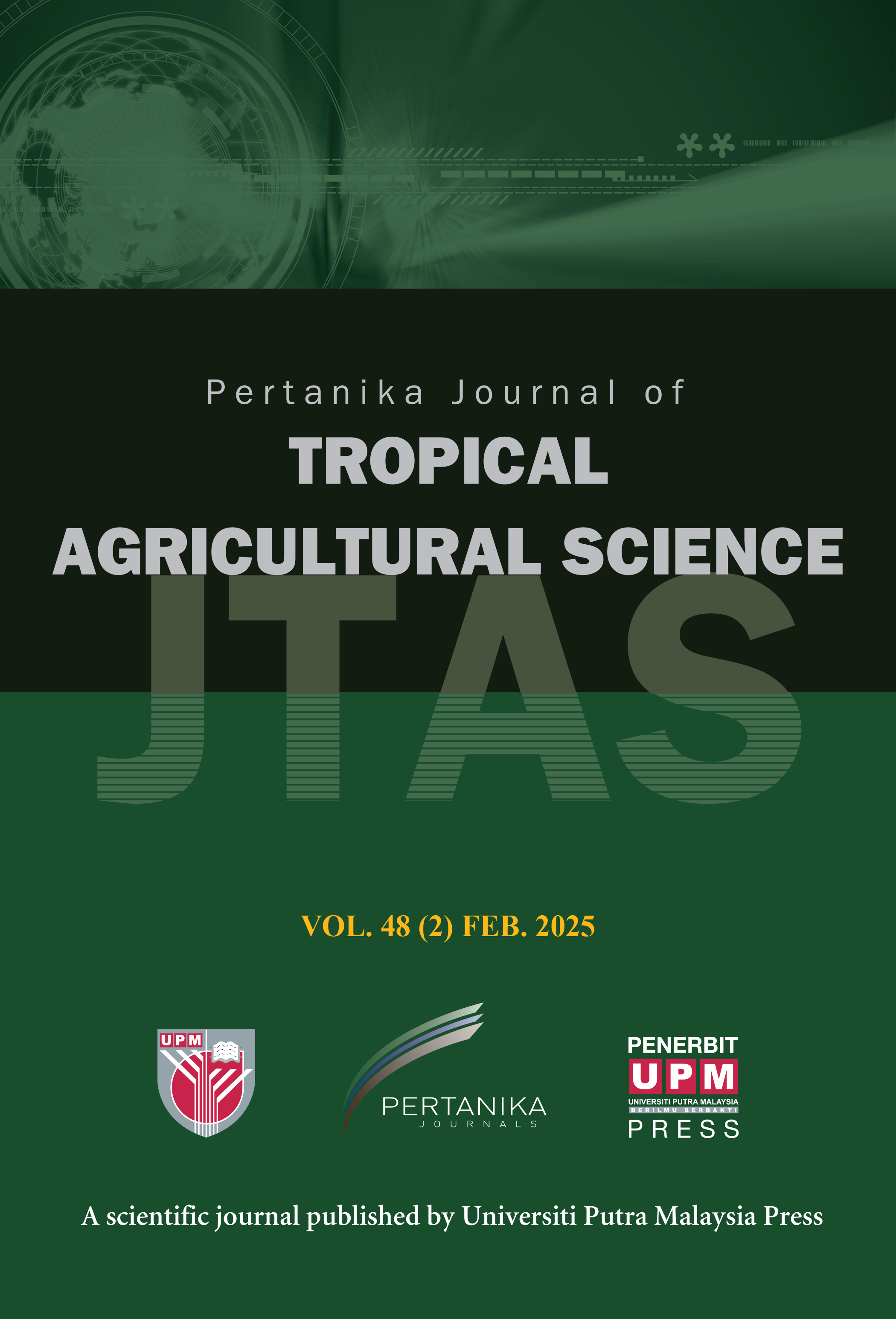PERTANIKA JOURNAL OF TROPICAL AGRICULTURAL SCIENCE
e-ISSN 2231-8542
ISSN 1511-3701
Assessment of Avicennia Species Using Leaf Morphology and Nuclear Ribosomal Internal Transcribed Spacer DNA Barcode
Jeffry Syazana, Zakaria Muta Harah, Ramaiya Devi Shiamala, Esa Yuzine and Bujang Japar Sidik
Pertanika Journal of Tropical Agricultural Science, Volume 48, Issue 3, May 2025
DOI: https://doi.org/10.47836/pjtas.48.3.13
Keywords: Avicennia, genetic, internal transcribed spacer (ITS), leaf morphology, leaf morphometric, mangroves
Published on: 2025-05-16
The mangrove genus Avicennia, found in tropical and temperate regions, plays a crucial role in providing critical services such as habitat, shoreline stabilisation, and carbon sequestration. Given their ecological and economic significance, expanding knowledge by revising species recognition is essential for validating morphological characteristics and overlapping traits. This study reassessed Avicennia species using morphological and genetic analysis. Samples were collected from Pulau Bagan Pinang, Pulau Burong, Pulau Kamat, Pulau Merambong, and Sungai Kemasik, Peninsular Malaysia. Mature leaves were assessed for their morphological traits, whereas young leaves were used to extract DNA for internal transcribed spacer (ITS) sequences. Statistical and phylogenetic analyses were conducted to evaluate leaf morphology variations and genetic divergence. Leaf morphology and size (p < 0.05) varied significantly among Avicennia species across study sites. Avicennia alba and A. rumphiana from the islands exhibited shorter, narrower, and thicker leaves than Sungai Kemasik. Avicennia marina displayed consistent leaf sizes. Leaf hierarchical relationships showed three to four phenetic groups, with separations at Euclidean distances of 25.0 (length), 18.0 (width), and 25.0 (thickness). Phylogenetics of Avicennia revealed four clades with strong bootstrap supports (83-100%). The guanine-cytosine (%GC) content was consistent, ranging from 63.5% to 64.6%. Avicennia rumphiana displayed high intraspecific genetic variation (1.57%) and distinctness from other species, supported by morphological and genetic data. This integrated approach is crucial for species identification and effective biodiversity assessments.
ISSN 1511-3701
e-ISSN 2231-8542




